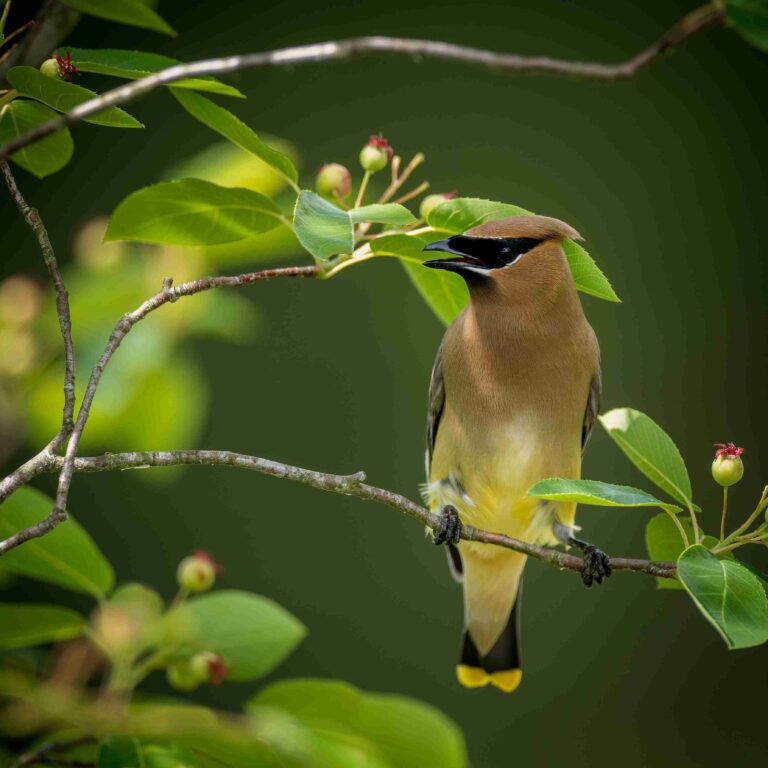Discover 10 Types of Tit Birds and Their Features
Tit birds, also known as chickadees or titmice, are a big family of small birds. They live mainly in the Northern Hemisphere and Africa. These birds are small, with short bills, and some have crests on their heads.
They vary in size from 10 to 22 cm long and weigh between 5 to 49 grams. Tit birds are adaptable, love to talk and live in groups. They eat insects, seeds, and nuts.
These birds have moved to North America twice, likely during the Early-Mid Pliocene. This article will look at 10 interesting types of tit birds and their special features.
Introduction to Tit Birds
Tit birds, also known as chickadees or titmice, are part of the Paridae family. They live in Europe, Asia, North America, and Africa. They can be found in forests and even in cities. Despite being small, they are very adaptable and strong.
Tit Birds: The Small but Mighty Songbirds
These birds have short, stout bills and stocky bodies. Some even have distinctive crests. These features help them survive. With their strong beaks, they can eat insects, seeds, and nuts, making them important in their ecosystems.

Geographic Distribution and Habitats
Tit birds live all over the world. They are found in forests and even in cities in Europe, Asia, North America, and Africa. They can live in many different places, showing how resilient they are.
If you like birdwatching or just love nature, you should learn about tit birds. These small birds show us the beauty and connection of our world. They remind us of the wonder of nature.
“Tit birds are the acrobats of the avian world, effortlessly navigating their environments and captivating observers with their charming antics.”
Great Tit
The great tit (Parus major) is a common bird found in Europe, the Middle East, and Central Asia. It stands out with its black head and neck, white cheeks, and bright yellow underparts. This great tit is a sight to see in the bird world.
This bird is known for its amazing acrobatics. It uses innovative ways to find food, often hanging upside down. It looks for insects, seeds, and even small hibernating bats in the winter. The acrobatic tit bird moves through dense foliage with ease, making it fun to watch.
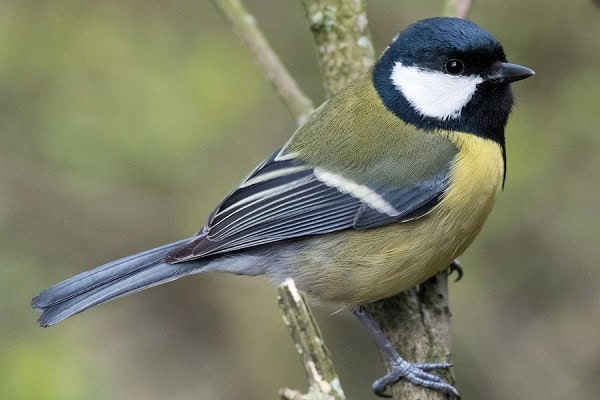
Great tits are also very adaptable, living in many different places from forests to city parks. They eat a wide variety of foods, which helps them live in areas changed by humans. This makes them common visitors to bird feeders in many places.
The great tit’s ability to adapt and its exciting flying skills have made it a favorite among birdwatchers. If you enjoy watching birds, look for the great tit in your backyard. It’s a bird you won’t forget.
Eurasian Blue Tit
The Eurasian blue tit (Cyanistes caeruleus) is a small, vibrant songbird found in temperate and subarctic Europe. It has striking blue and yellow feathers, making it a joy to see in the forest. Its blue cap and yellow belly show off nature’s beauty.
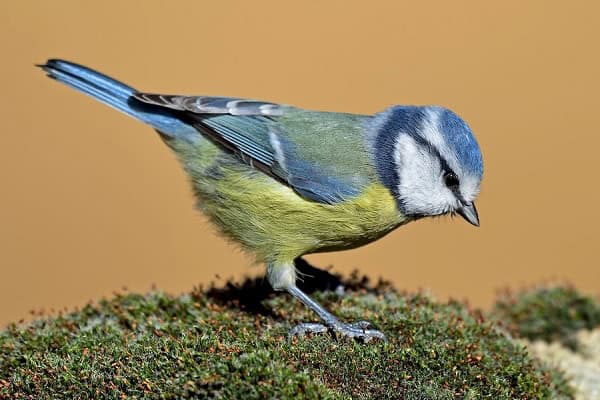
Distinctive Appearance and Breeding Habits
The Eurasian blue tit’s look is amazing. It has a bright blue crown, white cheeks, and yellow belly. These birds are agile, often hanging upside down to find insects and spiders.
They like to nest in tree holes or nest boxes. The female lays up to 12 eggs, which she incubates for 14 days. After the eggs hatch, both parents feed and care for the chicks, helping them survive in the forest.
Eurasian blue tits and great tits often compete for homes and food. But the Eurasian blue tit can live in many places, from dense forests to city parks. This shows how adaptable they are.
“The Eurasian blue tit is a true embodiment of nature’s artistry, with its striking blue and yellow plumage that captivates the eye.”
If you enjoy birdwatching, you’ll love the Eurasian blue tit. Its bright colors and fun movements are a treat to see. They remind us of the amazing life in our world.
Coal Tit
The coal tit (Periparus ater) is a standout among tit bird species. It thrives in the Palearctic region, adapting to various forest types. From coniferous to mixed woodlands, this small bird makes its home.
It’s known for its black cap and white cheeks, blending well with the forest. This bird eats insects, seeds, and berries, showing its ability to find food in different ways.
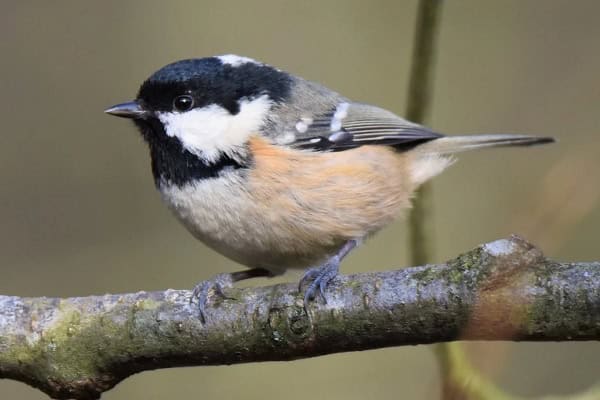
The coal tit is closely related to the black-crested tit, now seen as a subspecies. This shows the diversity within the tit family, each species fitting into its own niche.
Adaptability and Conservation
The coal tit shows great resilience against environmental challenges. Studies reveal it can survive extreme weather, depending on climate and food availability.
With climate change affecting the Palearctic, the coal tit’s adaptability is key to its survival. Researchers are studying its population and threats to help protect it.
“The coal tit’s resilience in the face of environmental challenges is a testament to its remarkable adaptability.”
Learning about the coal tit helps us understand how species, habitats, and the environment interact. This knowledge guides conservation efforts, helping to keep this bird in the Palearctic’s ecosystems.
Types of tit birds
The Paridae family includes many different tit birds, each with special traits. From the small marsh tit to the crested tit, they live in the Northern Hemisphere. They can be found in many types of places.
The marsh tit is a small bird with white cheeks, living in forests in Europe and Asia. Its relative, the willow tit, likes living in pine forests and lives farther north. The crested tit is known for its gray crown and lives in forests in central and northern Europe.
These are just a few examples of the many tit birds that interest birdwatchers and nature lovers. From the great tit’s agility to the Eurasian blue tit’s bright colors, the tit birds show how amazing birds can be.
Tit Bird Diversity
- The Paridae family has over 50 species across Europe, Africa, Asia, and North America.
- Tit birds vary greatly in size, from the tiny Fire-capped Tit to the larger Tufted Titmouse.
- In North America, the Baeolophus genus includes five crested tit species, like the Tufted Titmouse.
- The Crested Tit and Grey-crested Tit live in forests in Europe and Asia.
- The Machlolophus genus in the Himalayas and Indian Subcontinent has species like the Himalayan Black-lored Tit.
The variety of tit birds shows how well they have adapted to different places. From the marsh tit’s love for temperate forests to the crested tit’s preference for pine forests, these birds are truly fascinating.
Exploring the tit bird family reveals many interesting species, each with its own traits and behaviors. Whether you like the crested tit or the marsh tit, these small birds will surely impress you.
Tufted Titmouse
The tufted titmouse is a beloved bird in eastern North America. It’s known for its gray upperparts, white underparts, and distinctive tufted crown. This small bird is known for its bold and curious nature around humans.
Identifying Features and Behavior
This bird is about 6 inches long and has a wingspan of 8-10 inches. Its tufted crest on the gray head is a key feature. It can raise and lower this crest to talk to other titmice.
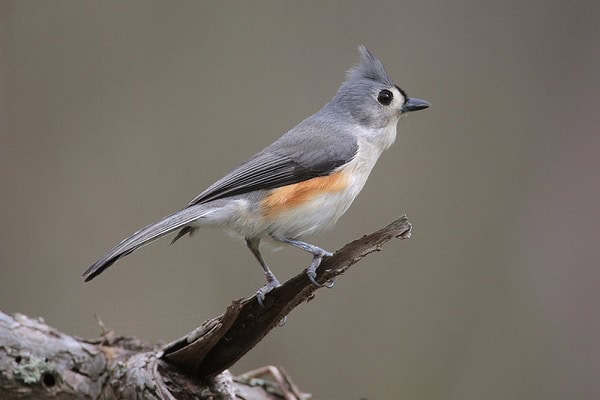
Tufted titmice are lively and often visit bird feeders. They even take food from people’s hands. They eat insects, seeds, nuts, berries, and fruits. They love elderberries, blackberries, apples, and cherries.
In winter, they look for high-fat foods like suet and black oil sunflower seeds. This helps them survive the cold months.
These birds are interesting nesters. They lay 5-8 white eggs with reddish-brown speckles. They may have multiple broods in a season. Both parents care for the eggs and the young.
If you like birdwatching or just enjoy backyard wildlife, the tufted titmouse will amaze you. Look for these birds in the eastern United States. Consider offering them food and shelter to enjoy their company all year.
Black-capped Chickadee
The black-capped chickadee (Poecile atricapillus) is a beloved bird in North America. It lives in deciduous and mixed forests. It’s easy to spot because of its black cap, white cheeks, and gray back. This bird is known for being bold and friendly, often coming close to humans and taking food from feeders.
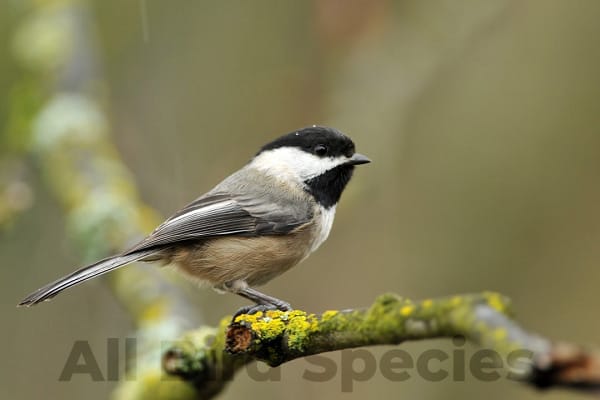
These small songbirds are famous for dropping their body temperature at night in winter to save energy. They also have great spatial memory, which helps them find their hidden food. The black-capped chickadee is the state bird of Massachusetts and Maine.
- Black-capped Chickadees are one of the first birds most people learn to identify.
- They are easily seen at many feeding stations within their range.
- Chickadees are frequently attracted to investigate birders making pishing sounds.
- The oldest known wild Black-capped Chickadee was a male and at least 11 years, 8 months old when it was recaptured and rereleased during banding operations in New York in 2021.
Chickadees bring other birds like warblers and songbirds together. Their sounds tell others about who they are, and where they come from, and warn of predators. Black-capped Chickadees can remember thousands of spots where they hide food. Even in freezing temperatures, they sleep alone in their nests.
“Observing chickadee flocks during migration seasons can help birders spot interesting migrants.”
Within chickadee groups, some birds don’t belong to a specific flock. The black-capped chickadee lives in the widest range of all North American chickadees. It spans from Alaska to Newfoundland and from northern California to Maryland.
Black-capped Chickadees make a familiar chick-a-dee-dee-dee call and a feebee song. They mate for life and build nests in tree cavities. They lay about 5-8 eggs, which both parents incubate for 10-15 days. The young leave the nest in 13-18 days and stay with their parents for about three weeks before they go their separate ways.
Carolina Chickadee
In the lush forests of the southeastern United States, the Carolina chickadee (Poecile carolinensis) delights bird lovers. This small songbird is part of the tit bird family. It has special traits that let it live in many places, from deep woods to backyards.
Distinguishing Traits and Adaptations
The Carolina chickadee is about 11.5-13 cm (4.5-5.1 in) long and weighs 9-12 g (0.32-0.42 oz). It’s known for its black cap, white cheeks, and gray back. It’s different from the black-capped chickadee in its tail length and body shape. It also lacks white wing bars, making it easy to tell apart.
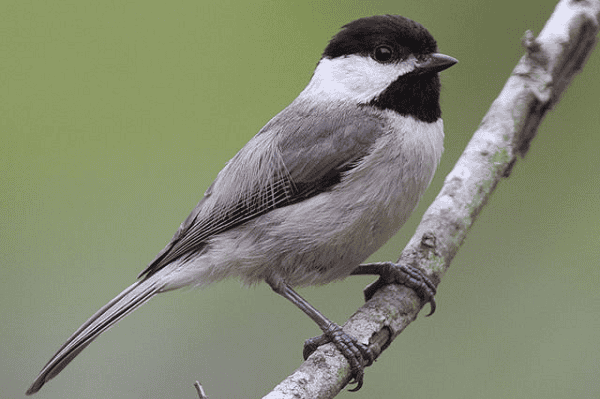
This bird is very adaptable, living in many places like forests and cities. They’re common at bird feeders, making them a favorite among birdwatchers. Their high-pitched calls and flock behavior add to their charm.
Carolina chickadees live about 10-12 years, so they’re not considered endangered. In Florida, they’re both breeders and common birds. This makes them a great find for those exploring the state’s bird life.
Whether you’re in the Everglades, Ocala National Forest, or your backyard, the Carolina chickadee will brighten your day. Their presence encourages us to appreciate the beauty of southeastern birds.
Sultan Tit
In the lush forests of Asia, the sultan tit shines as a gem among birds. Its bright yellow crest and black and yellow feathers are stunning. This bird’s upright posture and alert look make it a favorite among bird lovers and photographers.

The sultan tit is closely related to other tit birds but has its own special charm. It moves from tree to tree, looking for insects and small creatures. Like its relatives, it likes to live in tree cavities.
| Characteristic | Description |
|---|---|
| Appearance | The sultan tit is known for its bright yellow crest, black and yellow feathers, and upright posture. |
| Habitat | This bird lives in the rich forests of Asia, enjoying the area’s diverse ecosystems. |
| Behavior | It forages by moving from tree to tree for insects and small invertebrates. It also nests in tree cavities. |
The sultan tit is a favorite among birders and nature lovers in the asian tit birds region. Whether it’s sitting on a branch or flying through the leaves, the sultan tit is a sight to see. It shows the amazing diversity and beauty of the Melanochlora sultanea species.
“The sultan tit is a truly mesmerizing bird, with its vibrant plumage and regal posture. Catching a glimpse of this exotic species in its natural habitat is a true delight for any birdwatcher.”
Behavior and Ecology of Tit Birds
Vocalizations, Feeding Habits, and Breeding Strategies
Tit birds are very vocal and live in groups. They use many calls and songs to talk to each other. The “chic-a-dee-dee” call of North American chickadees is a well-known example. These calls help keep their groups together, warn of danger, and find mates.
Tit birds eat a wide variety of small insects and invertebrates. Caterpillars are a big part of their diet. In the winter, they also eat seeds and nuts to get by.
These birds make their nests in tree cavities. They can lay up to 19 eggs at a time. Some tit bird species work together to raise their young.
| Tit Bird Behavior and Ecology | Key Features |
|---|---|
| Vocalizations |
|
| Feeding Habits |
|
| Breeding Strategies |
|
“Tit birds are the small but mighty songbirds that captivate our backyards and forests with their vibrant colors, acrobatic movements, and enchanting vocalizations.”
Tit birds live in many places, from cities to forests. Their behaviors, like their calls, eating habits, and how they breed, are very interesting. Bird lovers and scientists find them very captivating.
Conservation Efforts and Challenges
Tit birds face many threats, like losing their homes and the effects of climate change. We need strong conservation efforts to save these beautiful birds. One big challenge is the loss of mature forests, which are crucial for many tit birds. We must protect and restore these important habitats.
Non-native predators, such as domestic cats, also threaten tit birds, especially when they are nesting. To help, we need to focus on responsible pet ownership and managing these predators. This is key to keeping tit bird populations safe.
Climate change is another big challenge. It can change the balance in tit bird habitats, making it harder for them to find food and breed. Researchers are studying how climate change affects tit birds. They’re working on strategies to lessen these impacts.
There are many efforts to protect tit birds and their homes. These include putting up nesting boxes, encouraging safe bird feeding, and managing land in ways that help tit birds and other endangered species. If we work together, we can make sure these birds have a bright future.
“Protecting tit bird habitats and addressing the threats they face is crucial for ensuring the long-term survival of these incredible songbirds.”
We can help tit birds and their ecosystems by focusing on habitat conservation, managing predators, and using climate-smart strategies. By acting now, we can protect these amazing birds for future generations.
Read Our Previous Articles
| Do Cardinals Mate for Life? |
| Birds Fighting or Mating: How to Tell the Difference |
| Spiritual Meaning Of Ducks |
| Top 7 Black and White Ducks Found In North America |
| What is Hobbes Bird? |
Backyard Bird Watching: Attracting Tit Birds
Tit birds are a joy to watch in your backyard. To draw them in, fill your bird feeders with sunflower seeds, peanuts, and suet. Also, consider adding nesting boxes to encourage them to stay.
Place feeders and nesting spots in areas with lots of plants and cover. This helps keep tit birds safe from predators. By making your yard welcoming, you can watch these agile birds up close. Species like the Eurasian Blue Tit and the Coal Tit can make your birdwatching exciting.
Anyone can attract tit birds with the right feeders and spots. Great Tits and Tufted Titmice are just a few you might see. By offering what they need, you can turn your backyard into a bird paradise. Enjoy watching their fun behavior up close.


